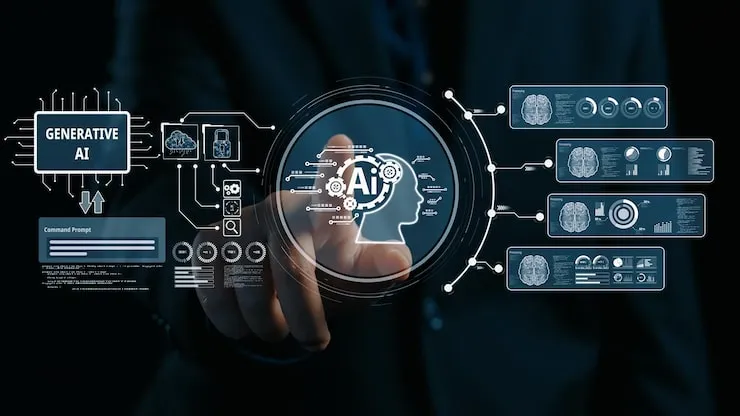Whether you are trying to get a refund, fix a mess or just ask a simple question, the process of customer service can feel like pulling teeth. Now imagine that same experience… but smooth. Instant. Maybe even pleasant? That’s where AI tools for automating customer support come in.
It’s 2025, and the old-school customer service model—long wait times, repetitive calls, agents reading off a script—is fast becoming history. Businesses of all sizes are plugging in smart AI systems to handle the flood of customer queries. These bots don’t sleep. They don’t forget what you said. And they don’t need coffee breaks.
Wait, What Exactly Are These AI Tools?
What will happen if a customer tries to reach you when You’re asleep. Your team’s offline. But a little chat window pops up, and boom—within seconds, they’ve got their answer. That’s not magic. That’s automation.
The AI tools strengthen Automated customer support tools. It’s not just basic Q&A either. Many tools today can detect the emotion behind the message (yep, even sarcasm), suggest solutions, or even redirect the query to a human agent if things get too spicy. The result? Quicker resolutions and less stress—for everyone.
Why Businesses Are Leaning Into Automation
Let’s be honest—handling hundreds or thousands of support tickets every week is no joke. Teams get overwhelmed. Mistakes happen. Customers get frustrated. It’s a loop nobody enjoys. There are real, tangible benefits of using AI tools in customer support, like:
- Less burnout for your human team
- Customers getting answers in seconds, not hours
- Slashed support costs (and more budget left for growth)
- Consistent service no matter the time zone
And hey, the bots aren’t trying to replace people—they’re here to help them do better.
Best AI Tools for Automating Customer Support in 2025

Alright, let’s talk tools. Some are built for startups, others are geared toward big enterprise teams. Here are a few that folks are loving right now:
Zendesk AI
If you’ve ever worked in customer support, Zendesk probably rings a bell. Their AI upgrade is sleek. It can auto-tag tickets, route them to the right team, and even provide answer suggestions based on past responses.
It's kind of like giving your support system a brain transplant—in the best way.
Intercom’s Fin
Don’t let the cute name fool you—Fin is sharp. This bot can handle customer conversations on its own, pulling answers directly from your existing help center. No need to write hundreds of rules or responses.
It even knows when it’s time to escalate. Fin doesn’t pretend to know it all. When it’s stumped, it calls for backup.
Freshdesk’s Freddy AI
- Freddy’s not your average chatbot. This AI accessory not only automates the answers - it really predicts what customers are trying to say.
- Freddy can help agents behind curtains, suggest answers and flag immediate problems based on emotions.
It’s quite a helpful tool for AI in customer service automation.
Ada
If you run a brand that serves people around the world, multilingual support from ADA is a very big gain. Also, you do not need a developer to start. The interface is a simple drag release.
It’s a hit among teams that want control, flexibility, and scale—without all the tech headache.
Tidio
E-commerce businesses love Tidio.Not only for support, but also for the opportunity to restore wagons and promote sales. The AI chat boat talks to the shop owners, leads them to a box and helps in real time.
Think of it as customer aids that sell and solve problems.
ChatGPT (Custom Workflows)
Last but not least—OpenAI’s own ChatGPT, especially when hooked up via API. It can do everything from answering niche product questions to helping with onboarding flows. You get full control over the tone, content, and flow.
A lot of startups are using ChatGPT-based bots for personalized, high-conversion interactions.
So, Which One Should You Choose?
Here’s the deal. There’s no one-size-fits-all. Choosing from the best AI tools for automating customer support in 2025 depends on:
- Your team size
- Your tech stack
- The kind of queries you usually get
- Your budget (some tools are freemium, others not so much)
Try a couple. Test them with real users. And always—always—make sure there's a way for folks to talk to a real human when needed.
Real talk: Do customers really like talking to robots?
- Surprisingly, yes-bot is well trained and responsible.
- No one will wait on hold. If a chatbot can give them a perfect, humbly answer within 10 seconds, they are happy.
Common Mistakes to Avoid
If you’re jumping into AI in customer service automation, here are a few face-palm mistakes you’ll want to sidestep:
- Launching without testing the bot first
- Not updating the bot as your product or services evolve
- Using AI as a wall instead of a bridge (always give human access)
- Letting your bot sound like… well, a bot. Tone matters!
The Future Looks Bright (and Automated)
Fast forward a year or two, and things are going to get even wilder. Imagine bots that respond to voice tone, understand humor, and auto-summarize long conversations for agents. We’re getting there. But even then, the goal isn’t to ditch humans. It’s to make them superhuman. The magic happens when AI and humans work together—not when one tries to replace the other.
Read More:- Best AI tools for Students in 2025
Final Thoughts
If you are still on the fence, this is for you. Start small. Choose part of your customer trip - returns, tracking, boarding - and automate it. See how it works. Talk to your team. Talk to your customers.
With the right AI tools for automating customer support, you can free up your time, wow your audience, and build a support system that actually… works. No more hold music. No more “please wait.” Just answers—fast, friendly, and on point.
FAQ's
Q: How will humanization be affected? Will it be lost?
Not if you do it right. Plus, your human team gets more time to build deeper connections.
Q: How long does it take to set up one of these tools?
Depends on the tool, but many take less than a week to go live—especially if you’re using your existing FAQs to train them.
Q: Is it worth it for small businesses?
Absolutely. Some of the best automated customer support tools offer free or low-cost plans. Big results, small commitment.
Q: What if my customers speak different languages?
Great news—many tools like Ada or Tidio offer multilingual support out of the box.
Q: Can AI handle complaints or angry customers?
It depends. Bots are getting better at detecting tone and de-escalating situations, but you should always have an “escalate to human” option for delicate cases.













